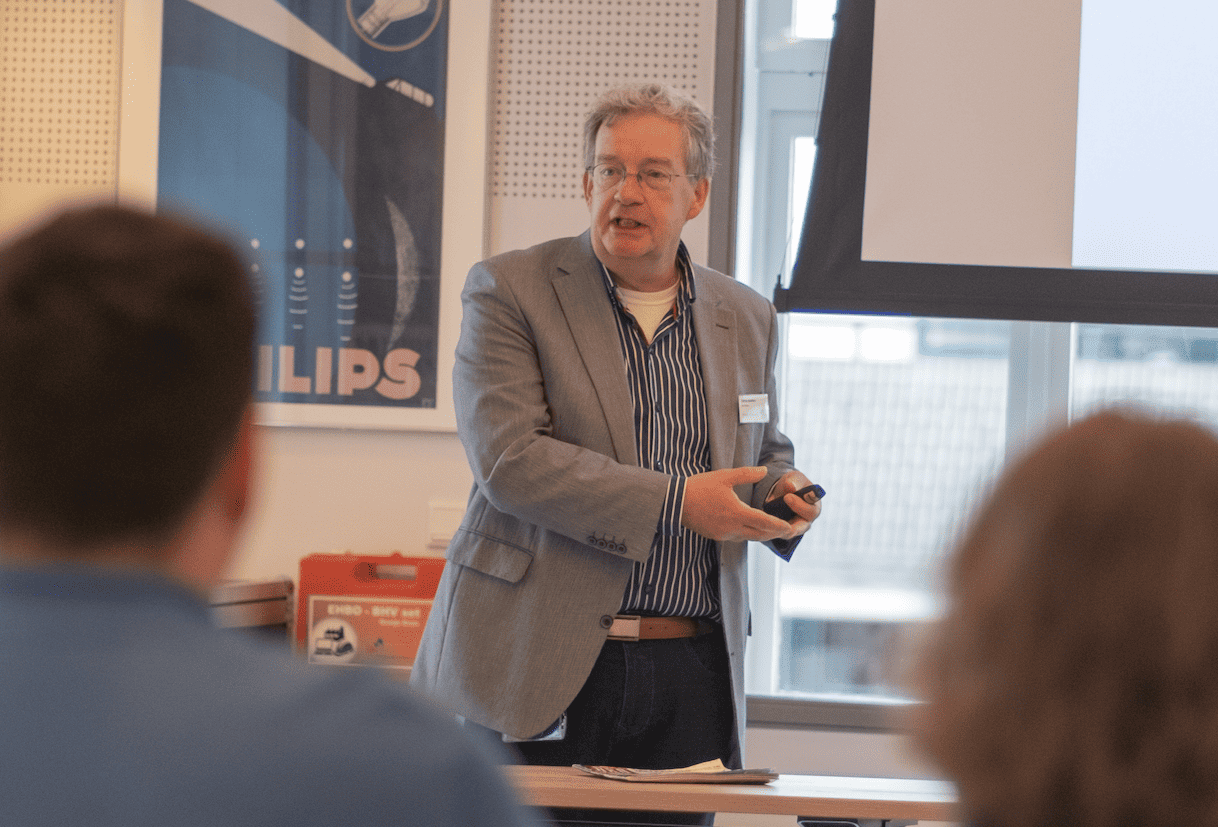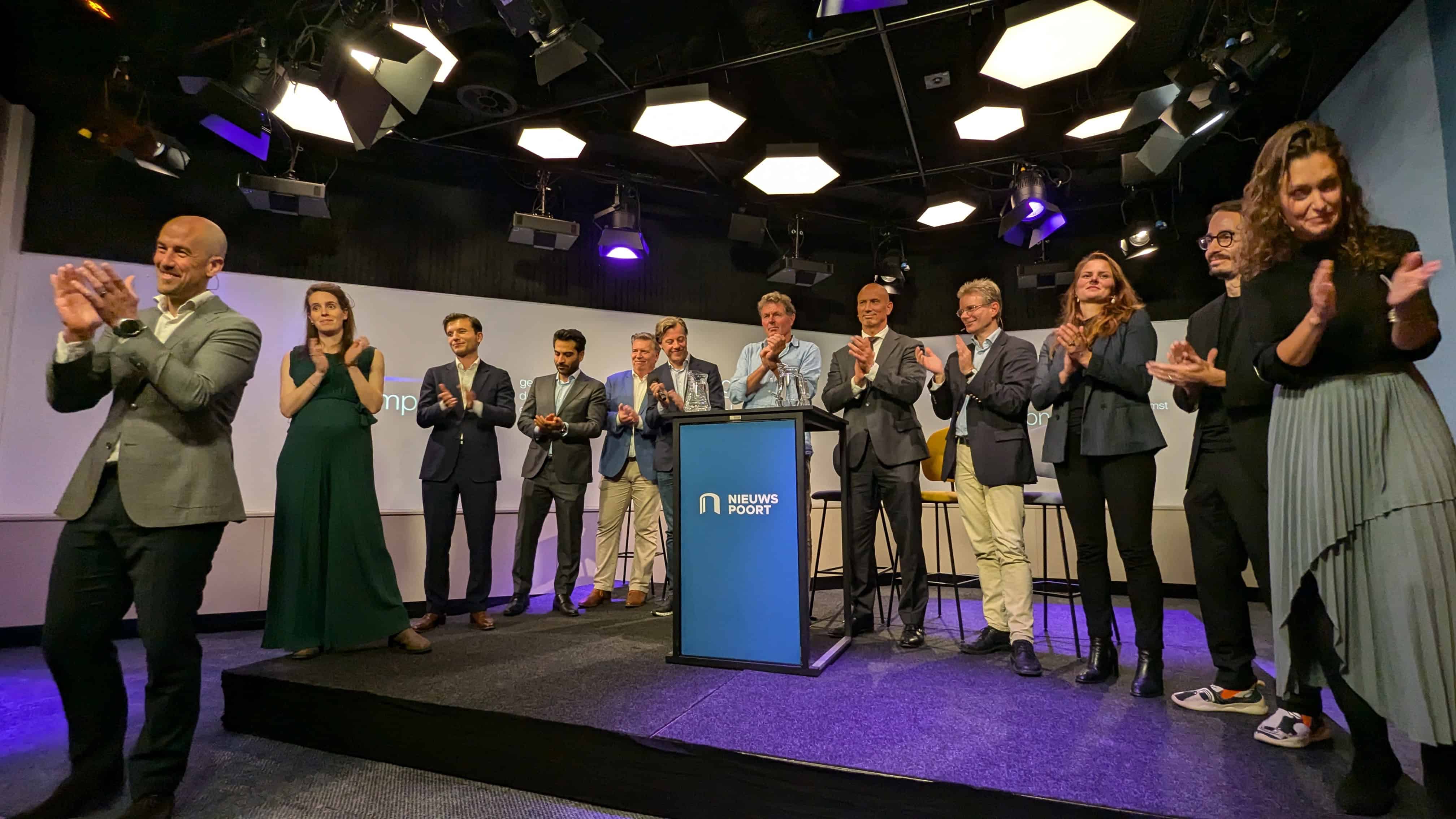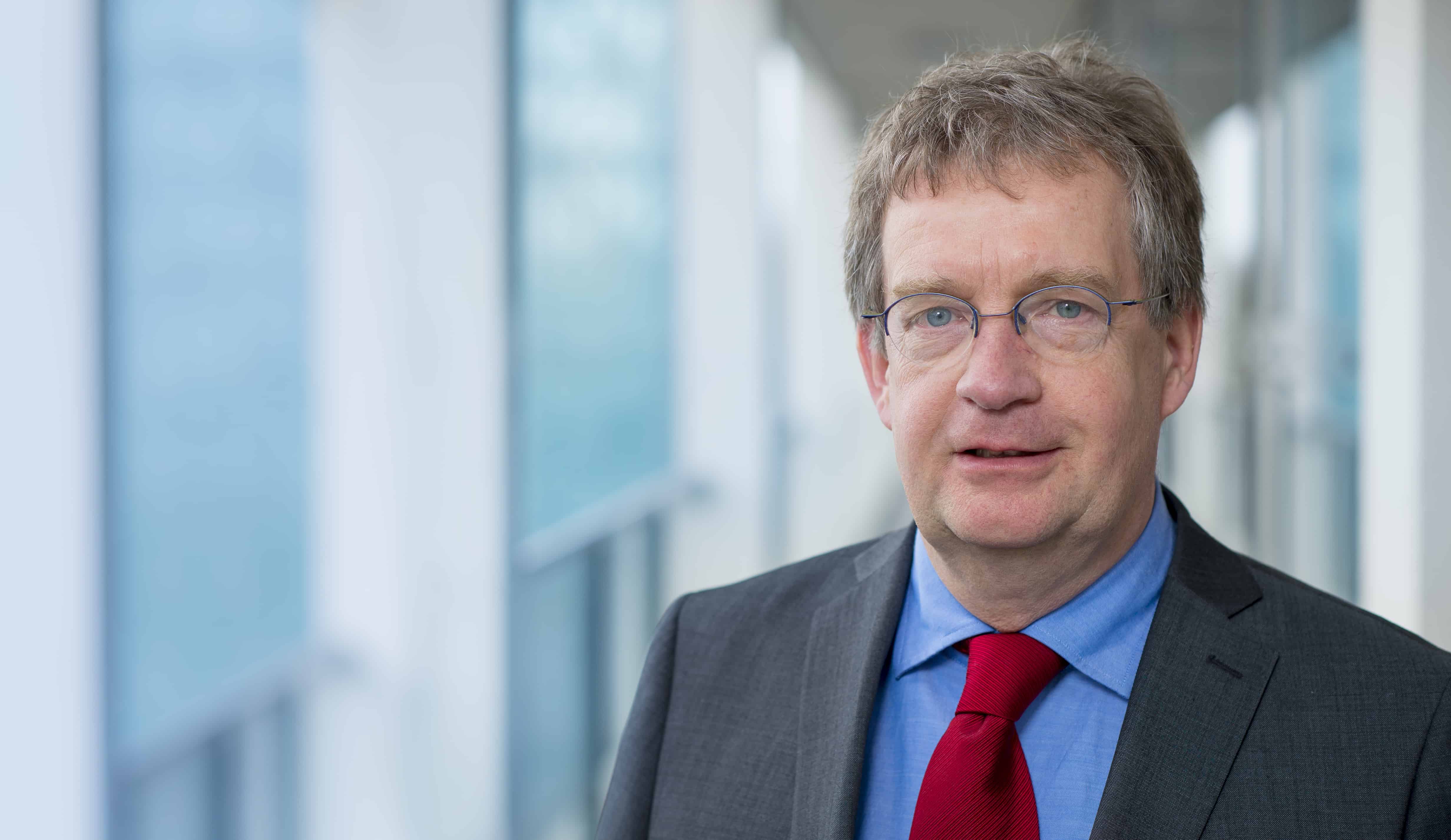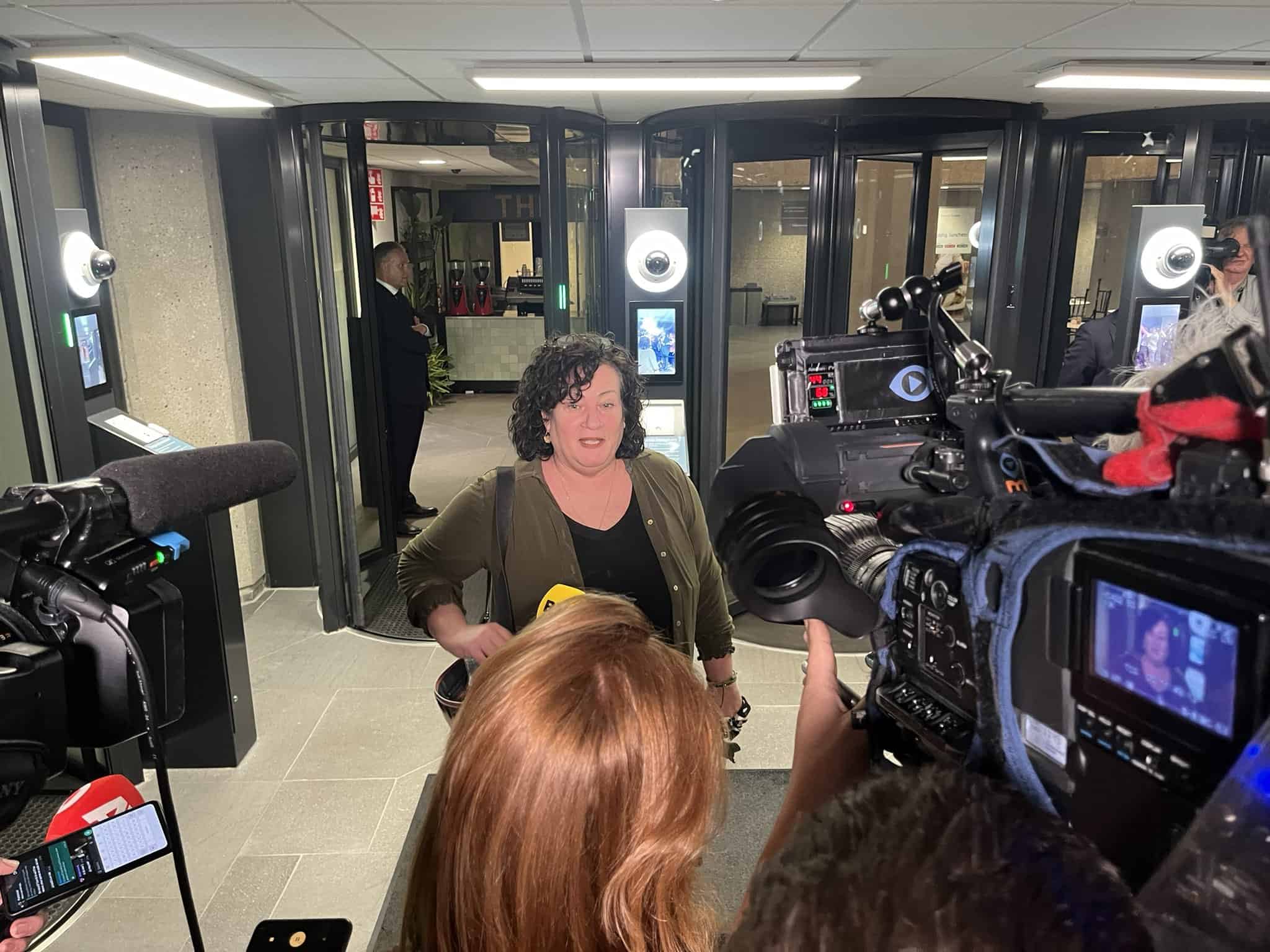
T-shirts, books, plastic cups: for these kind of products we normally have to make an assault on nature. Grow and harvest plants, cut trees or use oil. Jalila Essaidi promises to change this. With cow shit.
 There are people who know everything about one particular subject: the absolute specialists. But you have some who prefer to look for new themes all the time and start creating crossovers. Jalila Essaidi, from Eindhoven, belongs to the latter category. By linking her curiosity with her love for nature and the desire to connect, her projects arise.
There are people who know everything about one particular subject: the absolute specialists. But you have some who prefer to look for new themes all the time and start creating crossovers. Jalila Essaidi, from Eindhoven, belongs to the latter category. By linking her curiosity with her love for nature and the desire to connect, her projects arise.
She received world wide fame for her bulletproof skin based on spider silk. Not only because of the use of new bio based technology, but also because of the ethical consequences: she refused to sell her findings to the US Army. It was the beginning of her company Inspidere BV. Essaidi is designer and entrepreneur, but above all a pioneer who is looking for solutions to major societal challenges. Her latest project – unveiled today – is an expression of it, even more than her previous ones. Essaidi and her BioArtLab are working on nothing less than the termination of the manure problem. And contrary to what has been tried up to now, her solution is not in forcing farmers to produce less manure, but by finding a nice new destination for the manure itself. So what used to be waste is a resource now, and from there it can be the start of all kinds of new products.
“All these people actually want the same thing; they only use different words to express themselves.”
But what can you make of cow dung? To find out, Essaidi visited a farmer and dragged a first bucket of manure into her lab at the end of last year. Many more would follow in the months to come. At the same time she organised meetings with the governments, farmers organisations, and ngo’s for the conservation of nature and animals, which all look at manure from their own specific perspective. But that didn’t stop Essaidi: “All these people actually want the same thing; they only use different words to express themselves.”


 It was up to Essaidi to act as a “translator”, and she did so by turning the combined problem into brilliant new products. Meanwhile, the patents have been defined, there is a name for the material (Mestic ®), so the message can go out. In Moerdijk, some 60 kilometres from Essaidi’s BioArtLab, a scaleup of her company is already planned: it will take care of the first large scale production of bioplastics, biotextiles and biopaper, all based on manure. And although this is already a big and promising step for her, it will not stop there. Essaidi: “The possibilities are endless. Five years from now, we want to have built a bridge crossing the A2 highway near Eindhoven Airport. Biggest difference with all those other products is that the bridge should not be biodegradable.” Laughing: “We still have to fix that part.” Not wanting to wait for that moment, the local authorities already offered her the project.
It was up to Essaidi to act as a “translator”, and she did so by turning the combined problem into brilliant new products. Meanwhile, the patents have been defined, there is a name for the material (Mestic ®), so the message can go out. In Moerdijk, some 60 kilometres from Essaidi’s BioArtLab, a scaleup of her company is already planned: it will take care of the first large scale production of bioplastics, biotextiles and biopaper, all based on manure. And although this is already a big and promising step for her, it will not stop there. Essaidi: “The possibilities are endless. Five years from now, we want to have built a bridge crossing the A2 highway near Eindhoven Airport. Biggest difference with all those other products is that the bridge should not be biodegradable.” Laughing: “We still have to fix that part.” Not wanting to wait for that moment, the local authorities already offered her the project.
The manure problem is big and acute. Many European countries now have exceeded their “phosphate ceilings” (the maximum amount of produced phosphates), and the European and national governments have already come up with stricter rules towards farmers. But less manure normally means fewer cows and therefore a weaker economic position, both of the individual farmers and the country. Therefore, there is a need for smarter approaches.
“Manure is a gold mine”
It’s not the first time people have looked for solutions to the manure problem. “But it is for the first time that we accept manure as a valuable product. For example, in Germany clever solutions have been worked out with the fermentation of manure to fertilizer, and others have turned manure into energy. Very nice of course, but not really efficient. And at best, these are partial solutions. Real results you achieve only if you completely decompose manure and use the ‘new’ cellulose for new products out of biomaterial. Only then you notice: manure is valuable. In fact, it’s a gold mine.”
 With her solution, Essaidi enables the circular economy. The agricultural sector is able to comply with all international agreements, without losing their investment (the cows) and along the way it also creates a new, sustainable raw material for the manufacturing industry.
With her solution, Essaidi enables the circular economy. The agricultural sector is able to comply with all international agreements, without losing their investment (the cows) and along the way it also creates a new, sustainable raw material for the manufacturing industry.
In fact Essaidi solved two sides of the same problem. Not only manure is converted into new products, but at the same time you prevent that, for products like paper, textile and plastics, other natural resources – trees, corn, cotton, oil – are needed. Obviously, this only works when the entire value chain plays along, says Essaidi. Hence the ongoing discussions with all the stakeholders.
But how did Essaidi manage to get through to all these people and organisations that normally can’t stand each other and only share their typical differences? How did she onravel the ongoing political stranglehold? “What helps is my frankness. I am an outsider and a go-getter, I just put forward the questions that come to my mind, without taking a political position. At the same time, I do my research well. I have been looking at all aspects of the problem for months, and they notice. What also helps is that I don’t bother either of them with the well known solution: fewer cows. That all contributes to making them accept me as one who can solve the problem for all the stakeholders.”
“Americans often find it weird if I ask them to do something for me, here in Eindhoven this is the beginning of every success.”
‘Typically Eindhoven’, Essaidi calls it: don’t act as if it’s difficult, just grab the opportunity, preferably with a like-minded group of people. “And use each other’s strengths. Do not be afraid to ask for help from others. For example, Americans often find it weird if I ask them to do something for me, here in Eindhoven this is the beginning of every success.”
 Essaidi is firmly convinced that, with our ever-growing world population, we not only have to use our materials with care, but also need to produce closer to home. In her opinion Mestic could contribute to a clever balance between production at the farm and larger plants spread around the country. “It really starts with the farmers themselves. The better they have their own processes in order – the animal, the machines, the orbital period of the manure – the more efficient the whole process can run. For example, it’s important that the separation between wet and dry manure is organised on the farm.” Wet and dry manure? “Yeah, what do you think, that a cow leaves her dung and urine neatly on separate places? That’s something we will have to do for her.”
Essaidi is firmly convinced that, with our ever-growing world population, we not only have to use our materials with care, but also need to produce closer to home. In her opinion Mestic could contribute to a clever balance between production at the farm and larger plants spread around the country. “It really starts with the farmers themselves. The better they have their own processes in order – the animal, the machines, the orbital period of the manure – the more efficient the whole process can run. For example, it’s important that the separation between wet and dry manure is organised on the farm.” Wet and dry manure? “Yeah, what do you think, that a cow leaves her dung and urine neatly on separate places? That’s something we will have to do for her.”
In BioArtLab the first results of the process are already in place. Brown, granular chips, as the basis for the further process. They smell like grass, rather than like cow dung. Next to them, pieces of compressed biopaper that feel like parchment. “But with an additional pressing, we can make any kind of paper out of it.” Further on, a shiny white material which is indistinguishable from our usual plastic. Essaidi explains that, in order to get this far, three steps must be taken:
- At the farm manure is treated the right way, so ingredients from both the wet and dry manure can be retrieved.
- The fermentable components are removed from the manure in order to produce the chemicals required for the process of ‘pulping’ and acetylation.
- Pulping and acetylation of the solids from the manure into a high quality cellulose pulp and bioplastics.
What will Mestic bring us in the future? Essaidi: “That’s not just up to me. Of course we want to do the production in our scaleup facilities in Moerdijk and possibly also elsewhere, but we will also license Mestic so others can get to work with it.” Ultimately, the product must be able to work in 3D printers as well, but for that more research is needed. “We need to adjust the melting temperatures before that’s possible.” Moreover, the scaling will not only take place in the factories, but also at the source itself. “After the cows, the pigs will follow. And after that? Who knows.”
Although Essaidi has received offers to come work in Rotterdam, Germany and the United States, she remains faithful to Eindhoven. In fact, her BioArtLab will soon be relocated to an area of 700 m2 next to the international school, surrounded by nature, and right between the city and future Brainport Industries Campus. “That will give give us an ideal headquarters to work from. With all the required freedom to move and luckily still in a setting that is completely Eindhoven.”









